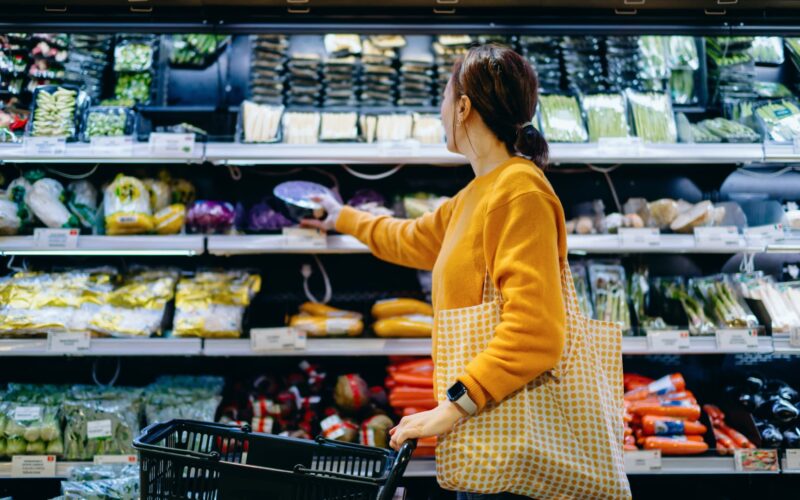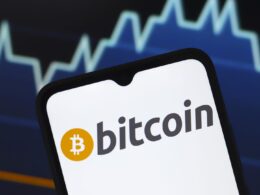D3sign | Moment | Getty Images
Signs of strain: Grocery debt, food pantry visits
Higher food costs have influenced how many consumers pay for groceries, and how well they are able to keep up with other bills.
“You can’t avoid needing to buy food, needing to buy groceries,” said Kimberly Palmer, a personal finance expert at NerdWallet.
From February 2022 to August 2024, as food prices swelled, credit card delinquencies increased 39.8%, according to a recent report by the Urban Institute. In 2023, the research firm found that about a quarter of adults paid for groceries on a credit card and took on debt as a result.
More Americans are using buy now, pay later loans to buy groceries. About 25% of respondents said they have used buy now, pay later loans to buy groceries this year, up from 14% in 2024, LendingTree found. More are also falling behind on those bills: 41% of respondents made a late payment on a BNPL loan in the past year, higher from 34% the year prior, the report found.
Some consumers are in more dire straits. In the past year, about 19% of polled Americans said they had to get food from a food bank or a pantry, according to a new Pew Research Center report.
‘Use all available resources’ to save on food
When it comes to saving on groceries, you want to do as much preparation as possible, experts say.
“Try to use all available resources,” like comparing prices or going to wholesale or discount locations, Bankrate’s Kates said.
Here are five ways to save on grocery costs:
1. Plan your meals
A good first step is to plan out your meals in advance, said Thomas Gremillion, director of food policy at the Consumer Federation of America.
Once you have an idea of the kinds of meals you’re going to prepare, write out a list of the things you’ll need before stepping into the grocery store.
People tend to spend less money when they go to the grocery store with a list, Gremillion said.
Look over supermarket sales circulars as you plan. Often, they feature discounted prices on certain brands or cuts of meat, said NerdWallet’s Palmer. “Maintaining that flexibility can help,” she said.
2. Stack discounts and coupons
Joining your local store’s loyalty program can help you get additional discounts on top of any weekly sales or deals, Palmer said. While you may have to trade personal information like your phone number or an email, you typically get lower prices in exchange, she said.
On top of sales, look for manufacturer’s coupons, Kates said.
3. Consider store brands
About 56% are buying generic or store-brand products, Credit Karma’s report found.
Doing so can help save on costs. Store brands can cost about 5% to 72% less per serving than name-brand products, according to a 2022 blind test conducted by Consumer Reports. About three quarters of the 70 store-brand products used in the test tasted just as good as the name brand, researchers found.
4. Reconsider where you shop
Compare store prices on their websites and apps, and try to time specific purchases when they’re on sale, Kates said.
In Credit Karma’s report, 22% of consumers said they are prioritizing shopping at retailers that offer promotions. Another 35% are shopping at discount stores like Dollar Tree or Dollar General.
And it’s no secret that shopping in bulk in a wholesale club can also provide savings. Wholesale clubs like BJ’s Wholesale Club, Costco or Sam’s Club offer different membership tiers with fees ranging from $50 to $55 for the most basic plans to $110 to $130 for premium versions.
5. Tap government, local aid
The Credit Karma report found that 17% of respondents applied or considered applying for food stamps while 16% are relying on food banks. Those can be valuable resources for families in need.
The Supplemental Nutrition Assistance Program, or SNAP benefits, is a federal government program that provides food benefits for qualifying low-income families, said Courtney Alev, the consumer financial advocate at Credit Karma. Contact your local SNAP office for more information; you may need to meet certain requirements in order to qualify.
Local food banks and pantries are available to anyone struggling to afford groceries, and typically more accessible compared to benefits like SNAP, experts say.
However, you might be required to provide information, depending on the food bank’s specific criteria or policies, experts say. For instance, some might require a proof of residence and income, Alev said.
You can look up your nearest food bank on websites like feedingamerica.org or 211.org.
Source link









